#kids who played this game had their lives irreversibly changed from this song
Audio
Shadow the Hedgehog
I Am... All of Me
#sonic the hedgehog#sonic music#sonic the hedgehog music#shadow the hedgehog#shth#music of the day#all together now!#CAN YOU SEE ALL OF ME#WALK INTO MY MYSTERY#STEP INSIDE AND HOLD ON FOR DEAR LIIIIIIIIIFE#kids who played this game had their lives irreversibly changed from this song#crush 40 went so hard for us and they gave us an ironically unironic banger#the small references to what i'm made of are the cherry on top#bonus: johnny gioeli making a shockingly good shadow voice in the sonic symphony version
246 notes
·
View notes
Text
Seems like it’s normal for children to have a phase where they watch the same movie over and over again. Parents my age assure me it is deeply unpleasant. A couple stories jump to my mind when I think about the weird things I did in that phase.
I tried to memorize and replicate Mickey Mouse’s precise movements in the Sorcerer’s Apprentice section of Fantasia, which required watching it over and over, carefully studying little details like shifting foot placement and finger position. I must have lost interest in this extremely kinetic type of viewing, since I never did that with anything else. Maybe if I had continued down that path I would be a totally different person. A significantly more physically coordinated person, I assume.
Also, Grammie has told me that I once made her watch Scamper the Penguin and physically grabbed her head to turn it back towards the screen any time she looked away to talk. That sounds perfect for the “insufferable to adults” phase.
Between the narrator explaining everything and the school section, much of Scamper feels like a dull educational nature documentary. I liked the music as a kid, and there was that one song we used as an excuse to play around with dad. I like that I used movies as raw material to invent games with. There were a few scenes in various movies that had their own little rituals or games associated with them. A line in The Lion King, a song on a Sing-Along, plus whatever that Fantasia thing was. That type of relationship to fiction seems very healthy, but also healthy and natural to grow out of.
You know, I have probably never gone more than a year without thinking of Scamper in one way or another. I don’t think that can be explained by the fact that I developed rituals around it, or even that I watched it so many times. I do also think about other movies from around that same time, but generally for pretty specific reasons. Samson and Sally, obviously because we failed to notice that it is completely horrifying. The Land Before Time because it was made during the brief window where an animation studio was doing better work than Disney. But Scamper is the first time I really experienced the emotional impact of a story.
Around the middle of the movie, Scamper and Snowflake are stuck on an ice chunk. They’re hungry but their only food source is in the ocean and they’re too young to be able to swim. The plot moves on, and they’re put in various dangerous positions that they need to get themselves out of. After their biggest success, they find themselves in the exact same situation; stuck on an ice chunk. But because of all they’ve been through, they can now swim and are able to get food in the ocean.
This felt nothing short of profound to 4-year-old me. Winnie the Pooh had character who felt things, but Scamper had characters who became different. They had gained new skills and changed irreversibly. As they return home, there’s a little song that totally captured the emotion for me, though maybe don’t listen to it now because it’s stupendously dumb and I can only vaguely find the emotion I read into it as a kid because I know exactly what feeling to look for.
In contrast to seeing fiction as a toy, the only way I could have been impacted by this kind of story is by buying into the fiction, thinking of the characters as if they were real. The level of subtlety was also perfect for an extremely young child. Because neither the characters nor the narrator said exactly what was going on, I probably couldn’t have explained why that part of the movie felt different than the rest, which is generally a sign that something’s getting through in a more fundamental way.
At the very end of the movie, the narrator implies that everything that happened in the movie is part of the natural, normal cycle of being a living thing. All the challenges, all the obstacles, all the growth is not only normal, but also inevitable. I could not have put this point in words as a kid, either but I did recognize that there was something going on here, too.
1 note
·
View note
Text
10 Book Recommendations for Earth Day (2017)
I’m doing something special because today is Earth Day and I can’t attend March for Science. As you may or may not know, I’m working toward a degree in Marine Science with a minor in Biology and focuses in Conservation and Ecology. The big thing I want to do with my knowledge is to help coral around the world, whether it’s to help build or protect more reefs, get into aquaculture, or educate people at aquariums. There’s a lot of information being thrown around by everyone and their mother about whether or not climate change exists or opinions on conversation in general. A lot of ecofriendly or eco-conscious people want to help but don’t know what to do, where to start, or who to listen to. Below I have listed a bunch of books by environmentalists, conservationists, and other people of science so that you may be able to get a sense for yourself as to what to believe and do. (Sorry in advance if the pictures are in poor quality)
1. Silent Spring by Rachel Carson
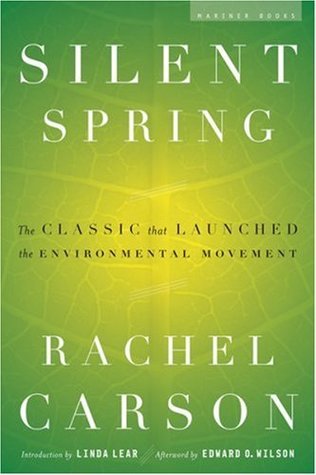
Rachel Carson’s Silent Spring was first published in three serialized excerpts in the New Yorker in June of 1962. The book appeared in September of that year and the outcry that followed its publication forced the banning of DDT and spurred revolutionary changes in the laws affecting our air, land, and water. Carson’s passionate concern for the future of our planet reverberated powerfully throughout the world, and her eloquent book was instrumental in launching the environmental movement. (Goodreads)
Basically she wrote about the effects of DDT on birds through biomagnification. DDT was a chemical that never dissolved or removed as waste from the bodies of organisms, once consumed it stuck with the organism even after death. Biomagnification is when something like a chemical increases in concentration as it moves up the food chain, getting to its highest concentration in top predators in an environment. DDT really affected the birds at the top of the food chain like eagles and pelicans, weakening the egg shells to the point of fracturing, leading to drastic population declines for many birds, including the Bald Eagle.
2. The Sea Around Us by Rachel Carson

This book is basically Carson’s way of introducing the ocean to the general audience and familiarizing them with a lot of the processes that make it function and the unique creatures found there. I really want to read this book, if I can ever get my hands on it!
3. The Lorax by Dr. Seuss
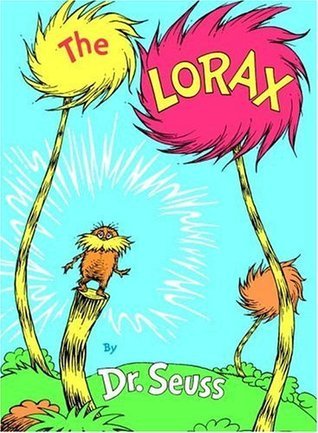
"UNLESS someone like you...cares a whole awful lot...nothing is going to get better...It's not." Long before saving the earth became a global concern, Dr. Seuss, speaking through his character the Lorax, warned against mindless progress and the danger it posed to the earth's natural beauty. (Goodreads)
This book gets mixed reviews, even within the science community. I’ve still added it to this list because my conservation ecology professor talked about it in class some a few times. It’s a good example for the tragedy of the commons and the effects of overharvesting. Many people claim that no human would ever let something like this happen, that they would eventually stop but history has proven otherwise. Real life examples including the extinction of the Dodo and the Steller Sea Cow, and the fall of Easter Island where many species of plant life native only to that island were lost due to overharvesting.
4. Walden by Henry David Thoreau
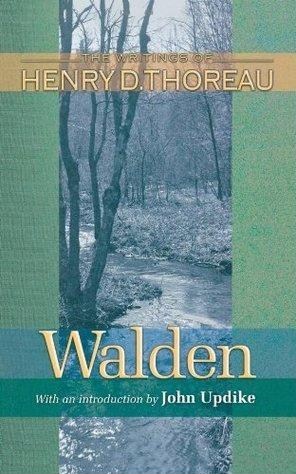
Walden, or, Life in the Woods, is an American book written by noted transcendentalist Henry David Thoreau. The work is part personal declaration of independence, social experiment, voyage of spiritual discovery, satire, and manual for self-reliance. Published in 1854, it details Thoreau's experiences over the course of two years in a cabin he built near Walden Pond, amid woodland owned by his friend and mentor Ralph Waldo Emerson, near Concord, Massachusetts. (Goodreads)
Thoreau believed that nature should be preserved because it was man’s closest link to God. He thought that humans needed nature to have a better spiritual connection. He was also one of the earliest natural historians and Walden was the most detailed account, at the time, about the nature of an area and how it changed over time.
5. The Diversity of Life by Edward O. Wilson

In this book a master scientist tells the story of how life on earth evolved. Edward O. Wilson eloquently describes how the species of the world became diverse and why that diversity is threatened today as never before. A great spasm of extinction — the disappearance of whole species — is occurring now, caused this time entirely by humans. Unlike the deterioration of the physical environment, which can be halted, the loss of biodiversity is a far more complex problem — and it is irreversible. Defining a new environmental ethic, Wilson explains why we must rescue whole ecosystems, not only individual species. He calls for an end to conservation versus development arguments, and he outlines the massive shift in priorities needed to address this challenge. No writer, no scientist, is more qualified than Edward O. Wilson to describe, as he does here, the grandeur of evolution and what is at stake. (Goodreads)
If you’re interested in a detailed account on evolution and species diversity then this book may be interesting to you and intriguing. Species diversity is extremely important to the environment and is threatened by many things including climate change and anthropogenic actions. It’s also interesting to read about the argument to save the whole environment in which a species lives and not just that species, which is a concept that is really being pushed today in conservation.
6. Last Child in the Woods by Richard Louv

"I like to play indoors better 'cause that's where all the electrical outlets are," reports a fourth-grader. Never before in history have children been so plugged in—and so out of touch with the natural world. In this groundbreaking new work, child advocacy expert Richard Louv directly links the lack of nature in the lives of today's wired generation—he calls it nature deficit—to some of the most disturbing childhood trends, such as rises in obesity, Attention Deficit Disorder (ADD), and depression.
Some startling facts: By the 1990s the radius around the home where children were allowed to roam on their own had shrunk to a ninth of what it had been in 1970. Today, average eight-year-olds are better able to identify cartoon characters than native species, such as beetles and oak trees, in their own community. The rate at which doctors prescribe antidepressants to children has doubled in the last five years, and recent studies show that too much computer use spells trouble for the developing mind.
Nature-deficit disorder is not a medical condition; it is a description of the human costs of alienation from nature. This alienation damages children and shapes adults, families, and communities. There are solutions, though, and they're right in our own backyards. Last child in the Woods is the first book to bring together cutting-edge research showing that direct exposure to nature is essential for healthy childhood development—physical, emotional, and spiritual. What's more, nature is a potent therapy for depression, obesity, and ADD. Environment-based education dramatically improves standardized test scores and grade point averages and develops skills in problem solving, critical thinking, and decision making. Even creativity is stimulated by childhood experiences in nature.
Yet sending kids outside to play is increasingly difficult. Computers, television, and video games compete for their time, of course, but it's also our fears of traffic, strangers, even virus-carrying mosquitoes—fears the media exploit—that keep children indoors. Meanwhile, schools assign more and more homework, and there is less and less access to natural areas. (Goodreads)
We also discussed this book in class earlier in the semester. My professor thought it important to point out how closely tied to nature we are and that our lives can be greatly affected by its absence. It’s an interesting read for anyone who wants to see the connections between a decline in physical and mental health and the amount of time we spend outside.
7. Song of the Dodo by David Quammen

In The Song of the Dodo, we follow Quammen's keen intellect through the ideas, theories, and experiments of prominent naturalists of the last two centuries. We trail after him as he travels the world, tracking the subject of island biogeography, which encompasses nothing less than the study of the origin and extinction of all species. Why is this island idea so important? Because islands are where species most commonly go extinct -- and because, as Quammen points out, we live in an age when all of Earth's landscapes are being chopped into island-like fragments by human activity.
Through his eyes, we glimpse the nature of evolution and extinction, and in so doing come to understand the monumental diversity of our planet, and the importance of preserving its wild landscapes, animals, and plants. We also meet some fascinating human characters. By the book's end we are wiser, and more deeply concerned, but Quammen leaves us with a message of excitement and hope. (Goodreads)
Interesting read for anyone who wants to learn about the idea of Island Biogeography and extinction. An island isn’t necessarily a land mass surrounded by water, islands now can refer to any habitat that is surrounded by a completely different habitat. For instance, a small park in the middle of a city is considered an island, also lakes and mountain tops. The relation to the Dodo is that the bird went extinct rather quickly, before anyone could really record everything about it, after humans made contact with it. The Dodo went extinct because it could not leave the island and escape the new threat-humans.
8. The Edge of the Sea by Rachel Carson
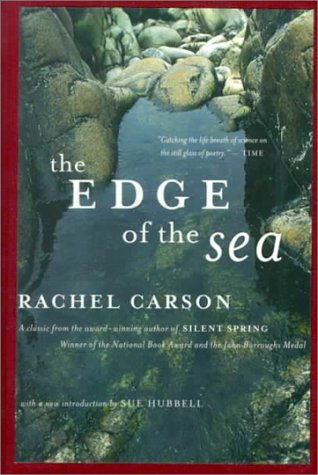
"The edge of the sea is a strange & beautiful place." A book to be read for pleasure as well as a practical identification guide, The Edge of the Sea introduces a world of teeming life where the sea meets the land. Rachel Carson's books have become cornerstones of the environmental & conservation movements. (Goodreads)
Another book by Rachel Carson that talks about the various environments found within the ocean and the creatures that inhabit them. Interesting read for learning and species classification.
9. Plant Earth: As You’ve Never Seen it Before by Alastair Fothergill, Vanessa Berlowitz, Mark Brownlow, Huw Cordey, and Jonathan Keeling
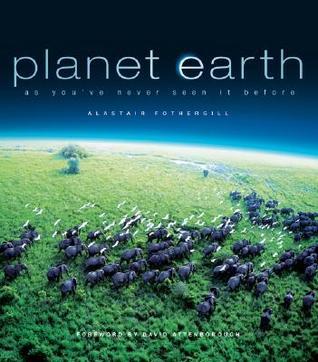
A visual odyssey that will change the way we see our planet, this remarkable book, companion to the acclaimed Discovery Channel/ BBC series, is an enduring and awe-inspiring record of one of the most ambitious natural history projects ever undertaken. Using the latest aerial surveillance, state-of-the-art cameras, and high definition technology, the creators of Planet Earth have assembled more than 400 stunning photographs of wondrous natural landscapes from around the globe, including incredible footage of the rarely spotted, almost mythical creatures that live in these habitats. Many of the images reveal inaccessible places that few have seen and record animal behavior that has never been filmed or photographed before. With the help of this highly advanced technology and the world's premier wildlife photographers, the book takes us on a spectacular journey from the world's greatest rivers and impressive gorges, to its mightiest mountains, hidden caves and caverns, and vast deserts. Planet Earth captures breathtaking sequences of predators and their prey, lush vistas of forests viewed from the tops of towering trees, the oceans and their mysterious creatures viewed from beneath the surface, and much more—in a magnificent adventure that brings unknown wonders of the natural world into our living rooms. (Goodreads)
Pretty much if you like BBC’s Plant Earth series you’ll like this book. It’s full of pictures, detailed accounts, and bountiful information that you may find intriguing.
10. The Forest Unseen by David George Haskell

A biologist reveals the secret world hidden in a single square meter of forest.
In this wholly original book, biologist David Haskell uses a one-square-meter patch of old-growth Tennessee forest as a window onto the entire natural world. Visiting it almost daily for one year to trace nature’s path through the seasons, he brings the forest and its inhabitants to vivid life.
Each of this book’s short chapters begins with a simple observation: a salamander scuttling across the leaf litter; the first blossom of spring wildflowers. From these, Haskell spins a brilliant web of biology and ecology, explaining the science that binds together the tiniest microbes and the largest mammals and describing the ecosystems that have cycled for thousands—sometimes millions—of years. Each visit to the forest presents a nature story in miniature as Haskell elegantly teases out the intricate relationships that order the creatures and plants that call it home. (Goodreads)
A book similar to Walden, it’s another natural account of an environment for a whole year. Interesting to anyone who enjoys short stories, liked Walden, or is fascinated by nature and how it changes over time.
#booklr#science#books#Book Recommendations#Earth Day#march for science#rachel carson#silent spring#the edge of the sea#the sea around us#the diversity of life#the lorax
7 notes
·
View notes